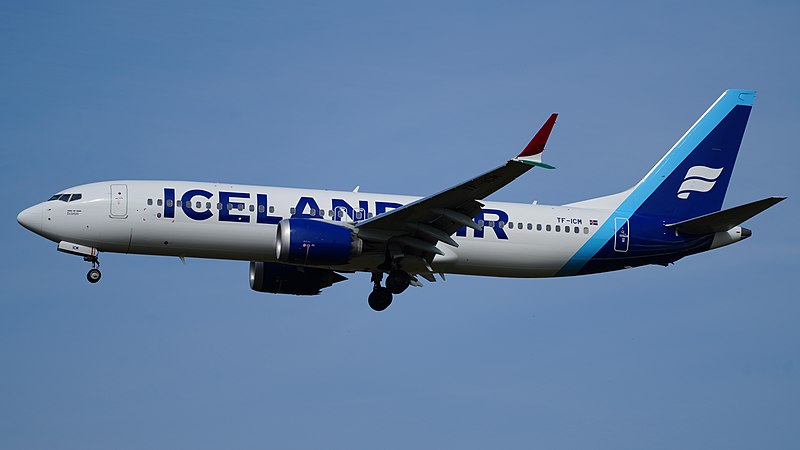
Boeing have come under fire over recent years, due to the tragic and fatal crashes of two 737 MAX aircraft since 2018, as well as a non-fatal accident occurring in December 2023 in which a door plug blasted out of a 737 MAX at an altitude of 16,000 feet. The question arises as to how and why these incidents were allowed to happen.
The two fatal crashes were that of a Lion Air 737 MAX into the Java Sea in October 2018 and of an Ethiopian Airlines 737 MAX which crashed in March 2019, just five months later. 346 people were killed in total, and as both downed planes were of the same model, questions arose as to it’s safety.
Despite Boeing initially blaming the pilots, it soon came to light that the true cause of the crashes was a flawed new system, one that had been added to the planes without the pilot’s knowledge, and for which they were offered no training – MCAS. The Manoeuvring Characteristics Augmentation System was designed to help with the ‘angle of attack’, maintaining a safe pitch, preventing the aeroplane going up too steeply and stalling. The 737 MAX used larger, more fuel-efficient engines than previous models, these engines had to be positioned higher up and further forward on the wing. However, in a nose up pitch (for example: on take-off), this would make a stall more likely. Therefore, MCAS was added to stabilise the plane, sensing when the aircraft was pitched too steeply and forcibly pushing the nose down.
At first, this seems like a good addition to the predecessor, the Boeing 737, making it more fuel efficient as well as safer. But the problem was that around the same time, Airbus had just globally released their new design of the Airbus A320, known as the A320 NEO. The 737 MAX was designed primarily to compete against the popularity of the NEO. Andy Pasztor states in the documentary Downfall: The Case Against Boeing that derivatives of other aircraft require less time to be approved by the FAA than new models and also have a much lower chance of requiring pilot training. The 737 MAX wasn’t an innovation – it had been built in a rush, out of desperation in the face of declining profits.
The 737 MAX wasn’t an innovation – it had been built in a rush, out of desperation in the face of declining profits.
The use of MCAS on the MAX would have a greater certification impact and therefore pilot re-training may have been required by the Federal Aviation Administration, who issue and enforce regulations and minimum standards for aircraft. The problem Boeing faced was that they didn’t have the time and were unwilling to spend the money on getting MCAS FAA certified, so instead, they externally declared that MCAS was merely an addition to Speed Trim, negating the need for pilot re-training.
In the case of both crashes, it was found that the single sensor feeding the MCAS system, which told the processing unit if the pitch was too steep, had failed. The sensors were behaving as if the plane was stalling, when in reality it was flying normally. Hence, when MCAS pushed the nose down, it sent the planes hurtling to earth.
Congressman Peter DeFazio who was part of the court case against Boeing says in the Downfall documentary that Boeing had decided to stop using two of these sensors and instead use one for their new 737 MAX aircraft. DeFazio said that this decision was fatal as “MCAS is safety critical and on an aeroplane, you never have a safety critical system that has a single point of failure.”
“MCAS is safety critical and on an aeroplane, you never have a safety critical system that has a single point of failure.”
Peter DeFazio, US Congressman
At the very core of the issue is profit. Pressure from Wall Street as well as the suffocating competition of Airbus led to Boeing cutting a multitude of corners, purposefully withholding information from airline companies and pilots in order to cut costs and maximise profits.
Boeing’s shift towards a profit-above-all attitude towards the aviation engineering was the result of the company merging with McDonnell Douglas in 1997. Boeing’s ethos had previously been grounded in expensive, ground-breaking engineering and with the merge, the company moved towards McDonnell Douglas’s cut-throat culture where they focused on cutting costs where possible and favouring upgrading models rather than creating fresh ideas. Aeroplanes are not products that can be churned out like smartphones on a production line, and the treatment of them in this way proved fatal.
The future of aviation is on thin ice when taking this cost cutting into consideration. Finding ways to make products cheaply is not limited to the aviation industry. For decades, companies have been sourcing ways to keep their costs down, by offshoring labour and seeking out cheap components. In an industry like aviation however, where safety is so critical, this attitude is concerning. The recent and sudden blowout of a door plug on another Boeing 737 MAX, which was less than three months old, does not bode well for the reputation of the company. The problem related to the door plug failure had been outsourced labour to Sprit AeroSystems in Malaysia, a company with historical issues with quality control.
In January 2021, after the two fatal crashes of Boeing 737 MAX aircraft, Boeing had to pay a criminal monetary penalty of 243.6 million dollars as well as compensation payments to its 737 MAX airline customers, which totalled 1.77 billion dollars. It’s a small financial price to pay when considering the company’s annual profits and many are left to wonder how the human cost of these greed-fuelled moves from Boeing may increase over the next few years.


